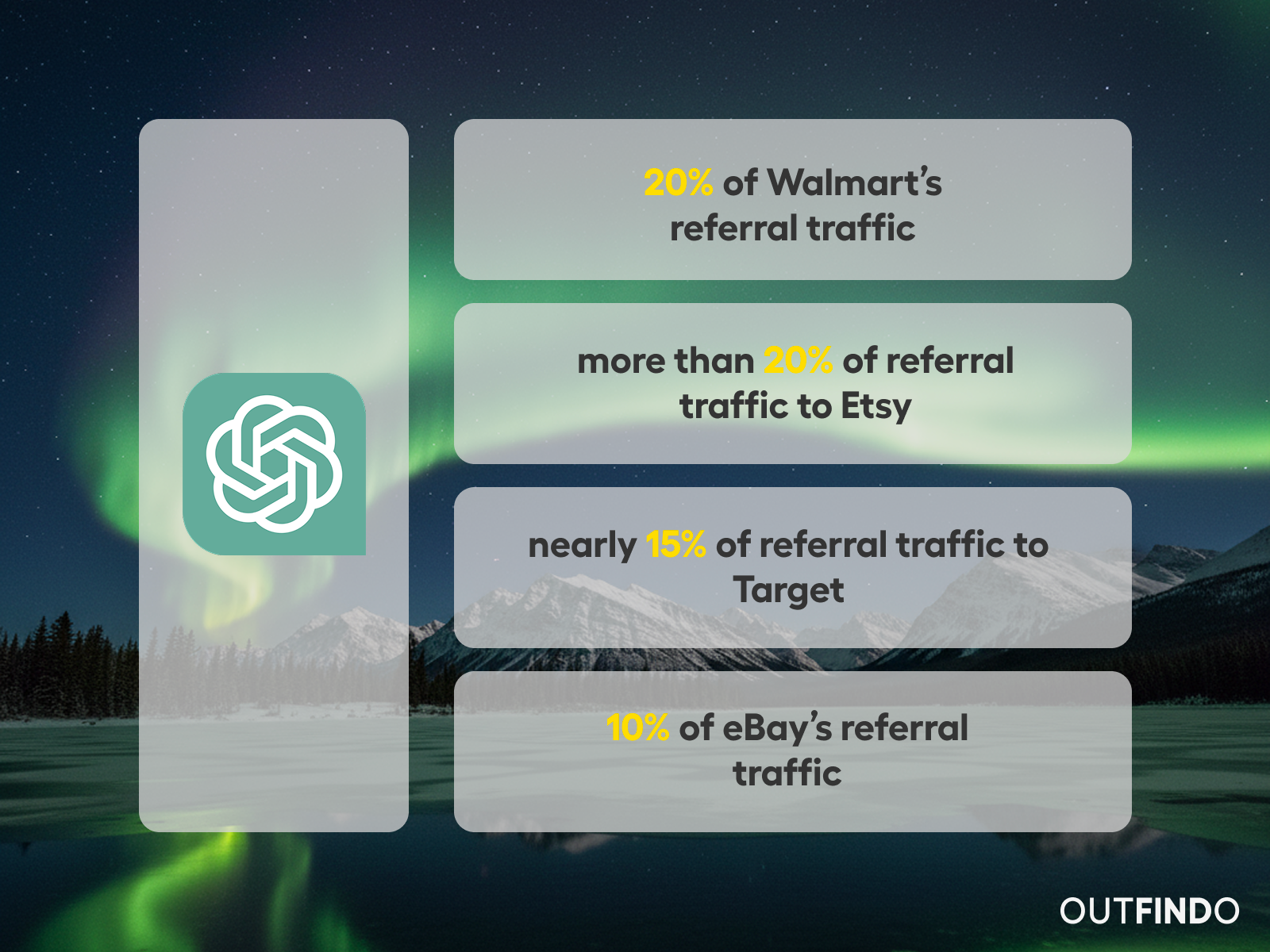Product Data Optimization: The New Playbook for Agentic Commerce
The way people shop online is broken. Your customers know it too. If you've been following AI trends, you knew this was coming. For everyone else, the biggest shift in e-commerce just happened.
On September 29, 2025, OpenAI launched Buy it in ChatGPT with Instant Checkout and the Agentic Commerce Protocol. This move officially turns the world's most popular AI into a live marketplace, kicking off the era of agentic commerce.
This isn't a future trend. According to Equativ research, 60% of your customers have already used AI to discover products. Now, they can buy it directly. The AI is no longer just a research assistant, but the storefront, the personal shopper, and the checkout counter, all in one.
So, how prepared are you for this revolution? What does it take not just to survive, but even better, to benefit from the rise of agentic commerce?
Let's dive into that.

The shift to conversational commerce
Let's be honest. For the last fifteen years, we've all been forced to think like computers just to buy something online.
You had to guess the right keywords, then navigate a maze of filters, praying you'd stumble upon what you actually wanted. It was a clunky compromise, and it's why people still loved going to a local shop. There, you could talk to an expert who actually understood your needs.
You'd never walk into a store and say: "Running shoes, size 10, blue, under $100."
You'd say: "I'm training for a half-marathon, my knees hurt on long runs, and I mostly run on pavement. What's right for me?" You'd give context, not just keywords. And now, you can access these perfect product recommendations by chatting with AI.
Here's the most important part: You get used to this new customer experience quickly. Why would anyone ever go back to guessing keywords and clicking filters when they can just ask?
They won't. Your customers' expectations have changed forever.
Agentic commerce: your new well-converting channel
Look at the data. Similarweb reports ChatGPT now drives 20% of Walmart's referral traffic, over 20% to Etsy, nearly 15% to Target, and 10% to eBay. This firehose of high-intent customers points away from traditional channels.

Traffic is half the story. The conversion rate is what matters. Forbes reports LLM traffic converts 9x better than traditional search.
A 2025 University of Virginia study found that 46% of people trust AI more than their friends for shopping advice, viewing it as unbiased. This trust is clearly well-placed: Akeneo research shows an overwhelming 84% of consumers are satisfied with purchases made from AI recommendations.
It's understandable. The AI provides:
- A trusted, expert-like conversation.
- A clear understanding of buyer intent.
- A dramatically shorter journey from problem to purchase.
The bottom line is simple: this is now the most direct and effective path to a sale online. The question is, are your products on it?
What you need to know about the Agentic Commerce Protocol (ACP)
Search engine marketing isn't only about SEO and PPC anymore. The whole industry now has to deal with Generative Engine Optimization (GEO) too. You might have also seen this as AEO, LLMO, etc., it's all just referring to the evolution of search beyond just search engines.
To understand why agentic commerce is a game-changer, you have to understand how an AI finds products: the old and the new way.
Without ACP: Great brand and SEO play the biggest role.
When you ask an AI for a product recommendation, it usually triggers a live web search. AI uses a "query fan-out" technique – splitting your prompt into multiple sub-queries, just like a human searcher would.
We're in the familiar SEO territory here. The AI synthesizes sources that appear for these multiple searches. Whatever ranked well for those queries – due to strong SEO– had the best chance of appearing in the AI's final recommendation.
With ACP: Clean, structured, and optimized product data wins.
The ACP creates a direct, standardized pipeline between your product catalog and the AI.
With ACP, the AI can ingest and compare structured product data directly from retailers. This is where the quality of your data becomes the primary factor for success.
Suddenly, every detail matters on a granular level. The AI is directly reading your:
- Product title
- Description
- Price & stock availability
- Attributes (e.g., material, capacity, use cases)
- Images
- Ratings & reviews
If this information is messy, incomplete, or written in vague marketing-speak, the AI will favor a competitor whose data is clean, comprehensive, and directly answers the user's needs.
This is where bidding for the top paid search placement or outranking everyone with SEO becomes a smaller piece of the puzzle (if any). ACP's core principle is to reward the quality, consistency, freshness, and relevance of the data itself.
How to optimize your product data for agentic commerce?
For the first time in a long time, winning doesn't depend on who has the biggest ad budget. It depends on who has the best data.
SEO is not dead. It will remain critical for every strategy where it makes sense today, and many of its principles have a huge overlap with this new field of GEO.
The Agentic Commerce Protocol (ACP) opens up an entirely new channel that operates under different rules. It's not about getting a click but becoming the source of truth.
So, how do you make your products the answer?
It comes down to three things:
1. Know your customers. You have to go deeper than demographics. You need to understand their real-world problems, the questions they're asking, and the language they use to describe their needs. This is the foundation for everything else.
Uncovering this level of insight traditionally meant hiring expensive market research agencies for studies that could take months. The modern alternative is an automated, AI-driven analysis.
Specialized tools can now systematically analyze thousands of public digital sources – from customer reviews to expert articles – to build an unbiased blueprint of customer needs in near real-time. For instance, AI consumer research agents, such as Outfindo's Beacon, are designed to identify customers' core motivations and pain points in any given product category.
2. Get your house in order. Your product data must be flawless. That means clean, structured, and always up-to-date. No missing fields, no typos, no outdated prices. The AI is a machine; it needs clean data to work. Any mess or inconsistency will get you ignored.
3. Enrich your data with human insight. This is the final and most crucial step. You must translate dry, technical specs into benefits that solve your customers' problems. Connect your product features to real-life use cases. Use the language your customers use. In short, make your data speak to a human, because that's what the AI is trying to do.
That's a ton of work, especially if you have hundreds or thousands of products. You'd need a team of data scientists and copywriters working around the clock. Doing this manually across an entire catalog is impossible.
Here’s where specialized AI agents come into play again. Tools like Outfindo's Diver use the customer blueprint to autonomously clean, standardize, and enrich product data at scale.
The result is a product catalog that's inherently structured for conversational AI. It answers customer questions before they're even asked, making your products the go-to recommendation for both humans and machines.

It doesn't sound easy, but your next step is simple
We just threw a lot at you: agentic commerce, GEO, data enrichment, and a fundamental shift in customer behavior. It's a lot to take in, and the thought of overhauling your data strategy can be daunting.
The good news is, you don't have to be a data science expert to solve this. You just need the right foundation. We built Outfindo to handle all of this complexity for you, turning a massive challenge into a simple, automated process.
The theory is clear. Now, see it in practice. Discover how Outfindo's AI agents autonomously transform raw product specs into a powerful, customer-centric asset that wins recommendations.
Schedule a live demo today and see what AI-ready product data looks like.

Article by
Vojta Joska
Vojta Joska is a content creator and copywriter at Outfindo, specializing in e-commerce. With a Media Studies and Journalism background, Vojta creates data-driven content that simplifies complex, technical topics, making them easy for anyone to understand and act on. His expertise helps turn insights into tangible results.





